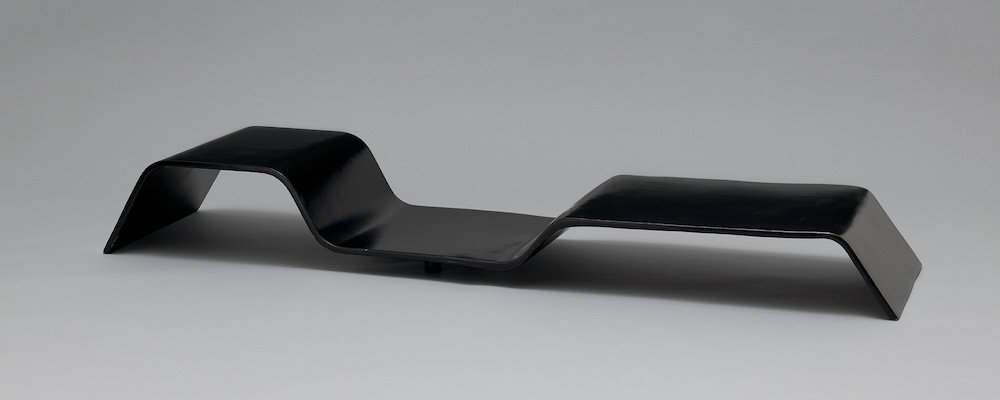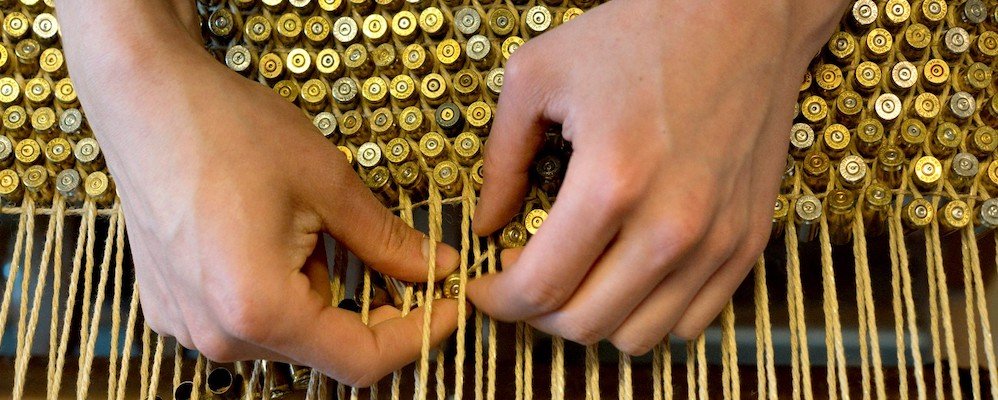Designing Peace
#SummerDesignExhibition
Cooper Hewitt - Smithsonian Design Museum presents an exhibition exploring the unique role design can play in pursuing peace.
‘Designing Peace’ features design projects from around the world that look at ways to create and sustain more durable peaceful interactions—from creative confrontations that challenge existing structures to designs that demand embracing justice and truth in a search for reconciliation.
The exhibition at Cooper Hewitt - Smithsonian Design Museum opens at a critical juncture of current global dynamics, with people facing vast social, environmental and economic inequities, and dozens of continuing conflicts, from internal insurgencies, long-standing armed standoffs and territorial disputes.
‘Designing Peace’ considers what might be possible if society were to design for peace and takes into account goal 16 of the United Nations’ Sustainable Development Goals, (Peace, Justice and Strong Institutions).
Visitors encounter a wide range of design responses to the underlying reasons for conflict and division, such as socioeconomic inequality, resource competition and environmental degradation—and will be encouraged to consider their own agency in designing peace through interactive installations, quiet moments of reflection and opportunities for practical action. It is featuring 40 design proposals, initiatives and interventions from 25 countries, represented by objects, models, full-size installations, maps, images and film.
The exhibition is organised in five sections, each asking a fundamental question about what it means to design for peace.
1. How can design support safe, healthy, respectful environments?
A life-affirming, long-term approach to peace and security is one less concerned with militarisation and more with safety, well-being and dignity for all. Design can support a culture that values and protects people, provides for fundamental needs, promotes healthy environments and respects diverse identities.
Among the projects on view in this section are Rael San Fratello’s Teeter-Totter Wall (above), which featured three pink seesaws installed through the slats of the towering steel US-Mexico border wall to echo how movements and actions taken on one side of the border directly impacted the other; Colombia’s Christmas Operations (above) demobilisation campaign, which brought floating orbs filled with messages from friends and family to the jungle’s rivers, in an effort to persuade rebels to leave behind their weapons and come home; and the Design Studio for Social Intervention’s co-created pop-up Social Emergency Response Centres, which bring communities together for mutual aid during social rather than natural emergencies. An interactive installation in the exhibition will invite visitors to consider when they experienced a social emergency in their own lives, how they were affected and what they did to respond.
2. How can design address the root causes of conflict?
Causes for armed conflict are complex, driven by social divisions, economic disparities and environmental and political factors. All are made more acute by a warming planet and a global pandemic. Design can play a significant role in building resilience, expanding access and challenging repressive systems to protect and improve lives globally.
Projects on view include the Regreening Africa mobile phone app, which enables local farmers to easily record and share their land restoration efforts in sub-Saharan Africa; Collaborative Architecture’s Peace Pavilion, which flipped a national war museum competition brief to alter the discourse on war and nationalism; PeaceTech Lab’s Hate Speech Lexicons, a series of handbooks that identify and explain conflict-provoking language, while offering alternative words and phrases that can be used to stop the spread of stop the spread of inflammatory language in media; and New World Summit-Rojava, designed by the Democratic Self-Administration of Rojava Studio and Studio Jonas Staal, featuring a circular, open public forum to embody the new democracy’s foundational value of collective self-representation.
Also on view will be the Institute for Economics and Peace’s Positive Peace Index (right) , which identifies the socioeconomic factors essential for durable peace. Visitors will encounter a series of actions (from planting a community garden to designing a better ballot) to design and build a more peaceful, just and inclusive world and are invited to take a postcard to share with friends and family.
3. How can design engage creative confrontation?
Not all conflict is damaging. Conflict can generate necessary change and improvements, especially when confronting unfair structures and systems. Creative confrontation can be transformative, making room for debate that allows for different voices and viewpoints. Provocative collaboration by designers, artists and activists has brought new attention to longstanding injustices.
This section features projects that acknowledge, address and challenge the status quo and existing structures, including Maps (Bullet Rug Series - hero picture), by DETEXT, which uses discarded bullet casings collected in different locations to weave shimmering rugs that tell hidden stories of international arms trafficking and military interventions; the Black Lives Matter Harlem Street Mural, one of eight painted in New York City, which provided a platform to reframe the conversation about public space, identifying the need for safe spaces for people of color to gather, create and heal; and the new World Peace Symbol, created by a Uruguayan graphic designer, devoid of the problematic meanings associated with previous peace signs.
4. How can design embrace truth and dignity in a search for peace and justice?
Realising justice can mean engaging all of society in a dialogue about the past and raising voices historically excluded. Design can play a vital function in elevating universal human values by creating spaces for sharing hidden histories and innovative ways to disseminate new knowledge.
This section features projects that embrace justice and truth in the search for reconciliation, including Hood Design Studio’s My Ancestors’ Garden, a landscape design for the International African American Museum in Charleston, South Carolina, that memorialises the port of entry for nearly half of all enslaved Africans brought to North America; Colloqate Design’s Paper Monuments project to elevate untold stories of New Orleans and its inhabitants, which began with an open call to residents to write and sketch monuments they wanted to see in their city; and Conflict Kitchen, a temporary takeout restaurant in Pittsburgh, which served cuisine and information from nations the United States was in conflict with to create understanding beyond the narrow lens of headlines and political rhetoric.
5. How can design help transitions from instability to peace?
Establishing a peace that is transformative, long-term and beneficial to all segments of society requires a comprehensive approach to sustainable development, peace-building and human rights. Collaborative design can play a key role by bringing together different disciplines, sectors and stakeholders, especially women, youth and those on the margins, to build durable peace.
This section examines novel interventions that facilitate a transition from instability to peace, including BLUE: The Architecture of UN Peace Missions, which re-envisions UN camps not as temporary and closed forts, but catalysts for local development, providing services and remaining in use after the peacekeepers depart; Stone Garden, a 13-story mixed-use tower by architect Lina Ghotmeh in post-war Beirut that materialises what the city has endured in built form; and HarassMap, a crowd-mapped anonymous data reporting platform, designed by four women who were experiencing daily sexual harassment on Egypt’s streets.
‘Designing Peace’ is organised by Cynthia E. Smith, curator of socially responsible design, with Caroline O’Connell, curatorial assistant. Exhibition design by Höweler + Yoon Architecture. Exhibition graphics by Common Name. Publication: Designing Peace: Building a Better Future Now designed by Practise, is distributed in North America by Artbook | D.A.P. and worldwide by Thames & Hudson, UK.
On view from June 10 through Sept. 4, 2023


















